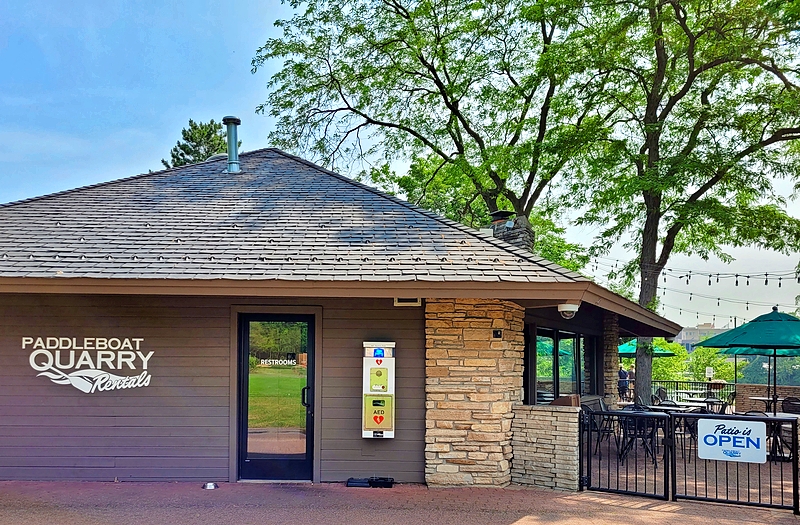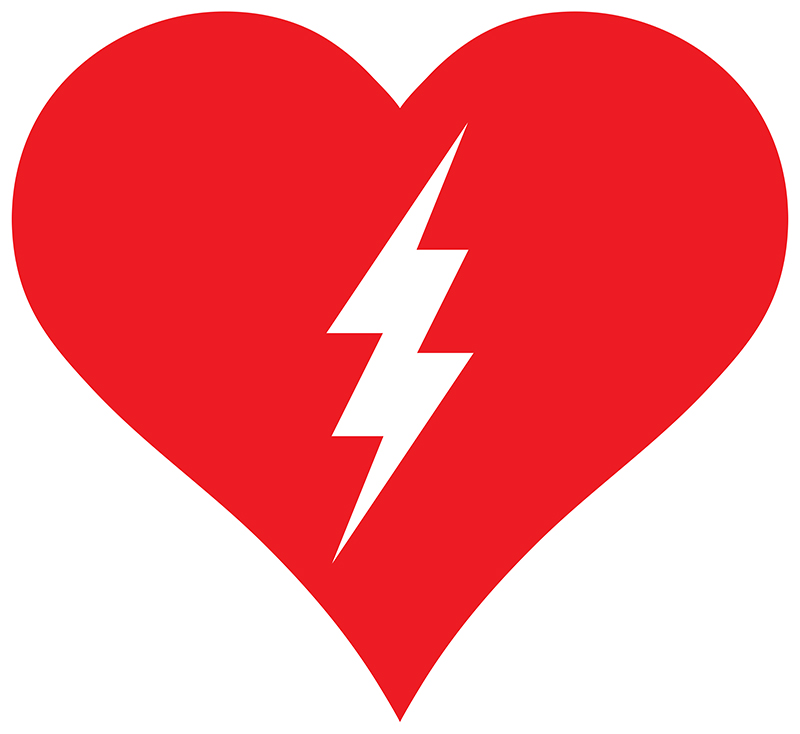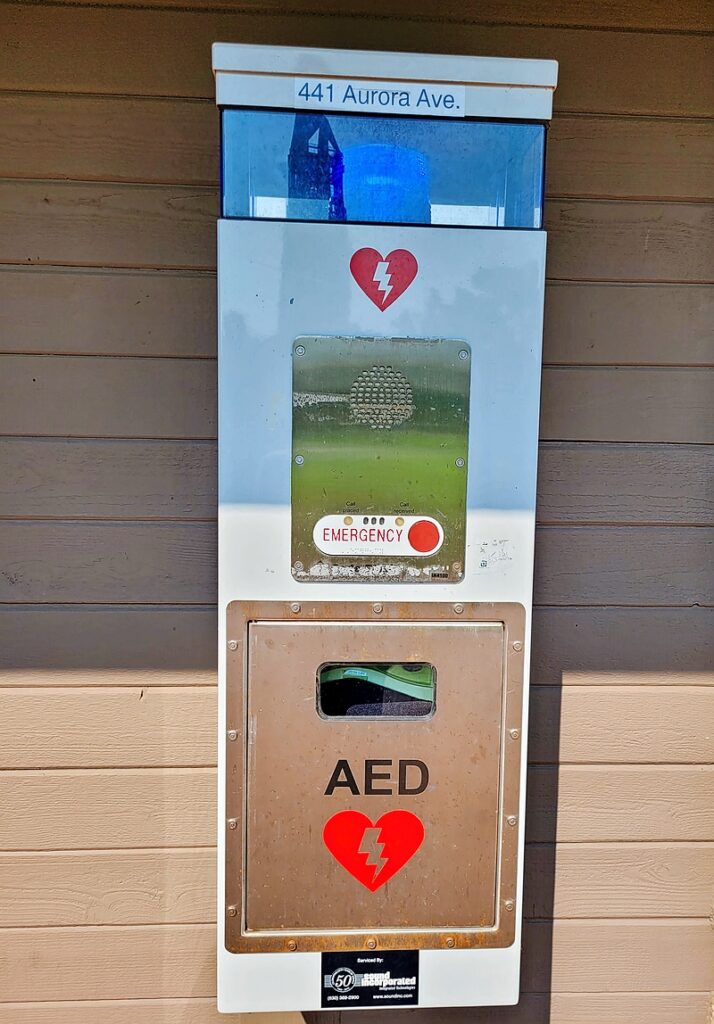The Heart of the Matter
By Mark Loehrke
Appears in the August 2023 issue.
Proliferation of AEDs throughout park district properties puts lifesaving cardiac care close at hand

When Buffalo Bills safety Damar Hamlin suffered a cardiac injury during a nationally televised NFL game earlier this year, the incident shined a spotlight on the critical role of first responders who quickly worked to stabilize him. It also highlighted the importance of having lifesaving tools on hand when emergencies arise.
That kind of accessibility is something that’s easy to take for granted in 2023, given the spread of automated external defibrillators, or AEDs, in public areas. Throughout the Naperville Park District’s many buildings and facilities, for example, AEDs have had a growing presence since at least 2005, when the very first unit was installed in the now-demolished Barn, funded in part by a grant from the Naperville Sunrise Rotary Club. That first device turned out to be the start of something big.

By 2011, AEDs were available at nearly a dozen more parks and facilities, including high-traffic places like the Alfred Rubin Riverwalk Community Center, Centennial Beach, and both Springbrook and Naperbrook golf courses. “The Naperville Park District hosts thousands of visitors and program participants each year,” says community development manager Sue Omanson. “As AEDs began to be developed for bystander use in public places, it made sense to install them in locations such as recreation centers and sports complexes, where people would be physically active.”
Between 2011 and 2016, the Illinois Department of Public Health offered grants to assist the park district with the purchase of AEDs (which cost around $1,500 each). The district also partnered with the Naperville Fire Department and DuPage Medical Group (now Duly) to install AEDs in the some of its largest parks. Today, the park district has more than 30 AEDs at parks and facilities throughout the city, as well as six additional devices for use in park police vehicles and ATVs—and many of them have indeed been involved in lifesaving situations over the years.

In 2013, for example, a Naperville marathon runner suffered a heart attack and was treated by nurses with the assistance of a park police officer, who brought an AED to the scene. And in 2019, park district maintenance employees were able to assist an individual who had suffered cardiac arrest while playing tennis at Nike Sports Complex, using CPR and an AED until paramedics arrived.
The park district offers annual training to its staff on CPR and the use of AEDs, while education for the general public is provided by the fire department and Edward Hospital. Douglas Erwin, division chief for emergency medical services at the Naperville Fire Department, says a crucial element to increase the chances of a positive outcome with an AED is for citizens to be as prepared as possible to act when needed. “Having the basic training of a CPR/AED course can reduce the ‘sheepish’ feeling a bystander might have when it comes to stepping up, even if it won’t eliminate it entirely,” Erwin says. “But once applied, AEDs are very user-friendly—the device talks you through using it, and even reminds you to keep calm.”
The goal, of course, is to make sure that when an emergency like Damar Hamlin’s happens at a Naperville park, someone will be able to step in and make sure there’s a similarly happy ending to the story. And having more AEDs available—and more community members who are ready, willing, and able to use them—is a big leap toward getting there.
Photos: Naperville Park District. Art: iStock


